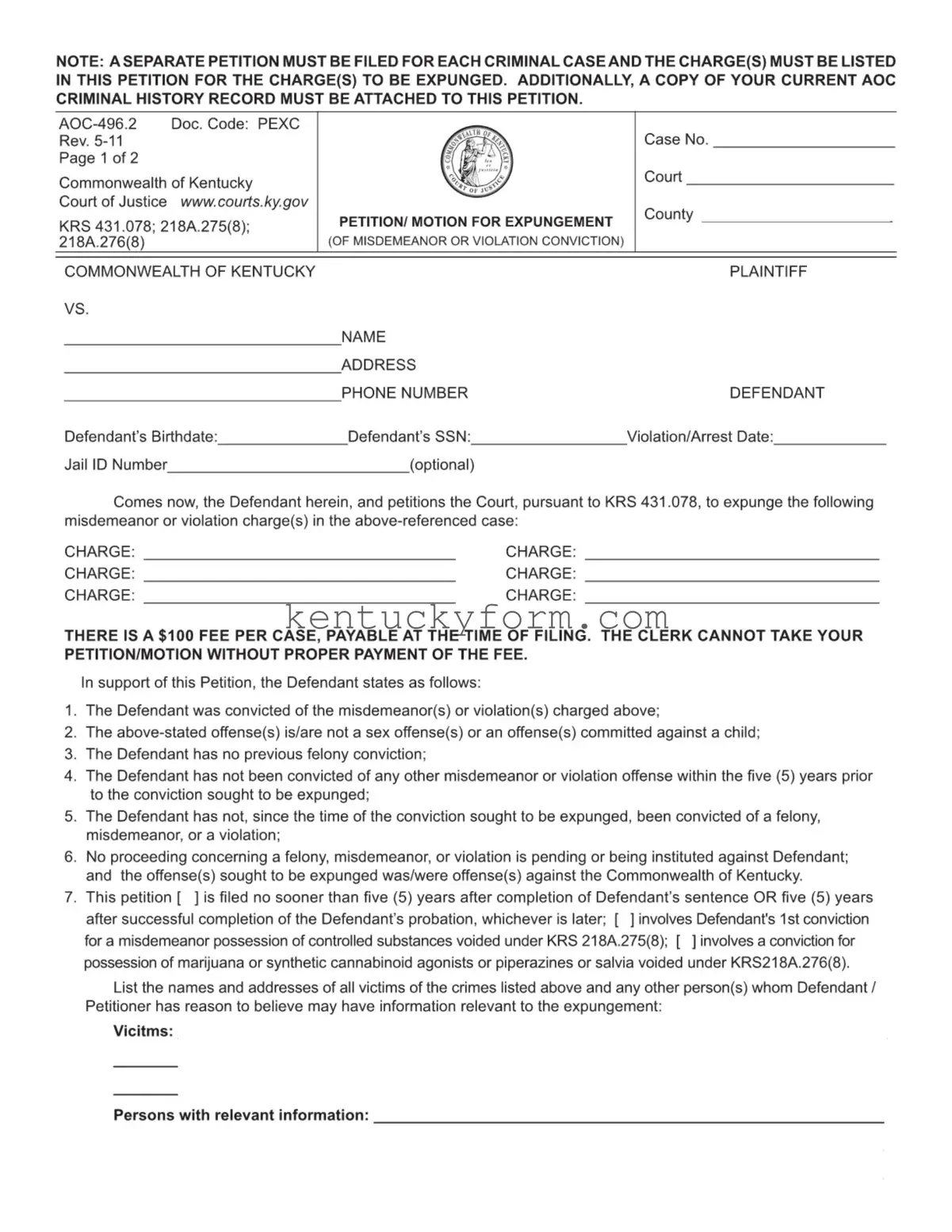The Expungement Paperwork form closely resembles a Pardon Application in that both processes are aimed at mitigating the consequences of a person's past criminal convictions. Each document requires detailed personal information, including the applicant's criminal history, and both necessitate the applicant to convincingly demonstrate rehabilitation or significant positive change. Expungement and pardon applications are foundational in offering an individual a pathway toward clearing their name and potentially restoring rights that were lost due to a conviction.
Similarly, the Expungement Paperwork form shares commonalities with a Record Sealing Application. Both documents serve the purpose of limiting access to one’s criminal records, although the legal outcomes and eligibility requirements may differ. Applicants must provide comprehensive details of their record and often need to justify why sealing or expunging the record is in the interest of justice. These applications are critical steps for individuals looking to move past their criminal history and alleviate the burden it may impose on their personal and professional lives.
A Petition for Non-Disclosure also mirrors the Expungement Paperwork form in several respects. This legal document is used in some jurisdictions to prohibit public access to certain types of criminal records, without completely destroying the records. Both forms necessitate a detailed account of the applicant’s criminal history and require the applicant to meet specific eligibility criteria. The goal of both is to aid in the rehabilitation process by preventing a past offense from permanently hindering an individual’s opportunities.
The Clemency Application is another document that bears resemblance to the Expungement Paperwork form. Although clemency is more broadly aimed at reducing the penalties associated with a conviction and can encompass pardons, commutations, and reprieves, it parallels the expungement process in its requirement for a comprehensive disclosure of the applicant's criminal history and often a persuasive demonstration of redemption or undue hardship. Both processes embody the legal system's capacity for mercy and rectification of past injustices.
The Request for Criminal Record Check is akin to the Expungement Paperwork form in that both involve an individual’s criminal history records. The former is typically initiated by individuals or employers seeking to verify if an individual has a criminal record, which can sometimes prompt the discovery of a need for expungement. While serving different functions—one for checking records and the other for clearing them—each process interacts closely with the maintenance and disclosure of criminal record information.
Similarly, an Application for Certificate of Rehabilitation shares objectives with the Expungement Paperwork form. Both are legal documents aimed at acknowledging an individual’s reform and distancing them from past convictions. While a Certificate of Rehabilitation does not erase a criminal record like expungement, it is a formal recognition that the individual has been rehabilitated. This process, like expungement, requires detailed personal information and evidence of a positive post-conviction life.
Lastly, the Background Check Authorization form, although more commonly used by employers and not related directly to legal proceedings, is somewhat similar to the Expungement Paperwork form. This authorization allows for the retrieval of an individual’s criminal history, potentially bringing to light the necessity for expungement. Both forms deal with the sensitive nature of an individual’s criminal past but from differing perspectives—one seeks to clear it, while the other seeks to disclose it.


